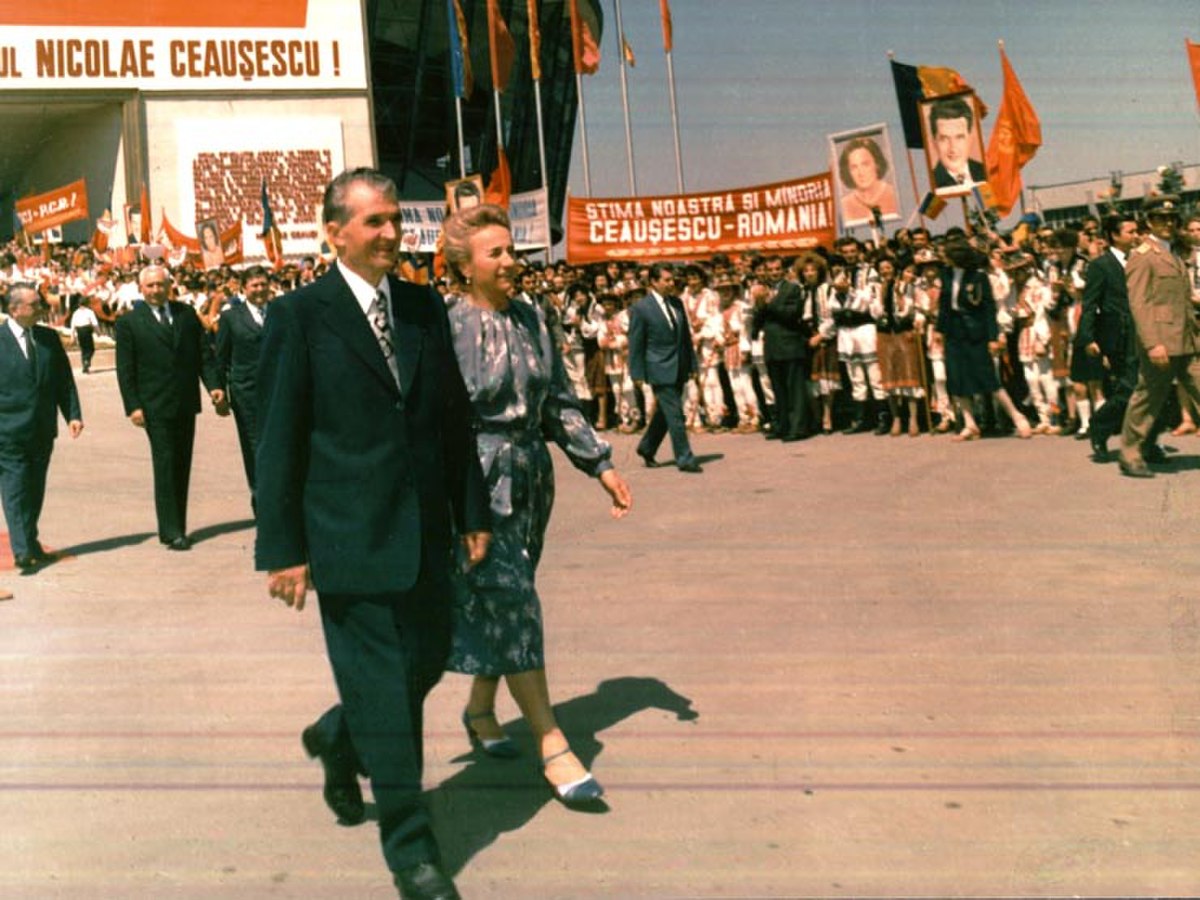
Socialist Republic of Romania
RomaniaSoviet occupation following World War II strengthened the position of Communists, who became dominant in the left-wing coalition government that was appointed in March 1945. King Michael I was forced to abdicate and went into exile. Romania was proclaimed a people's republic[90] and remained under military and economic control of the Soviet Union until the late 1950s. During this period, Romania's resources were drained by the "SovRom" agreements; mixed Soviet-Romanian companies were established to mask the Soviet Union's looting of Romania.[91] Romania's leader from 1948 to his death in 1965 was Gheorghe Gheorghiu-Dej, the First Secretary of the Romanian Workers' Party. The Communist regime was formalized with the constitution of 13 April 1948. On 11 June 1948, all banks and large businesses were nationalized. This started the process of the Romanian Communist Party to collectivize the country's resources including agriculture.
After the negotiated withdrawal of Soviet troops, Romania under the new leadership of Nicolae Ceauşescu started to pursue independent policies, including the condemnation of the Soviet-led 1968 invasion of Czechoslovakia—Romania being the only Warsaw Pact country not to take part in the invasion—the continuation of diplomatic relations with Israel after the Six-Day War of 1967 (again, the only Warsaw Pact country to do so), and the establishment of economic (1963) and diplomatic (1967) relations with West Germany.[92] Romania's close ties with Arab countries and the Palestine Liberation Organisation (PLO) allowed to play a key role in the Israel-Egypt and Israel-PLO peace processes by intermediating the visit of Egyptian president Sadat to Israel.[93]
Between 1977 and 1981, Romania's foreign debt sharply increased from US$3 to US$10 billion[94] and the influence of international financial organizations such as the IMF and the World Bank grew, in conflict with Ceauşescu's autarchic policies. Ceauşescu eventually initiated a project of full reimbursement of the foreign debt; to achieve this, he imposed austerity policies that impoverished Romanians and exhausted the nation's economy. The project was completed in 1989, shortly before his overthrow.
